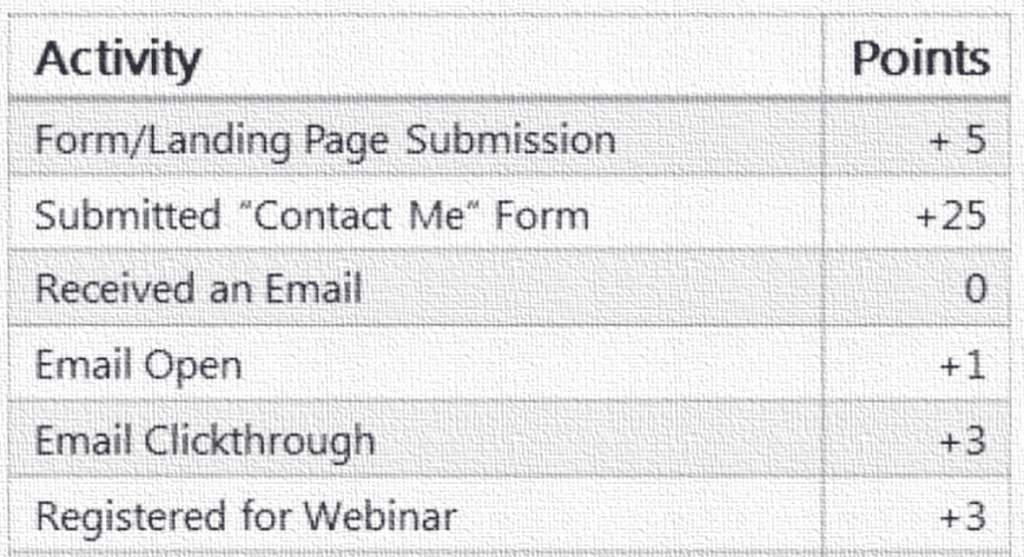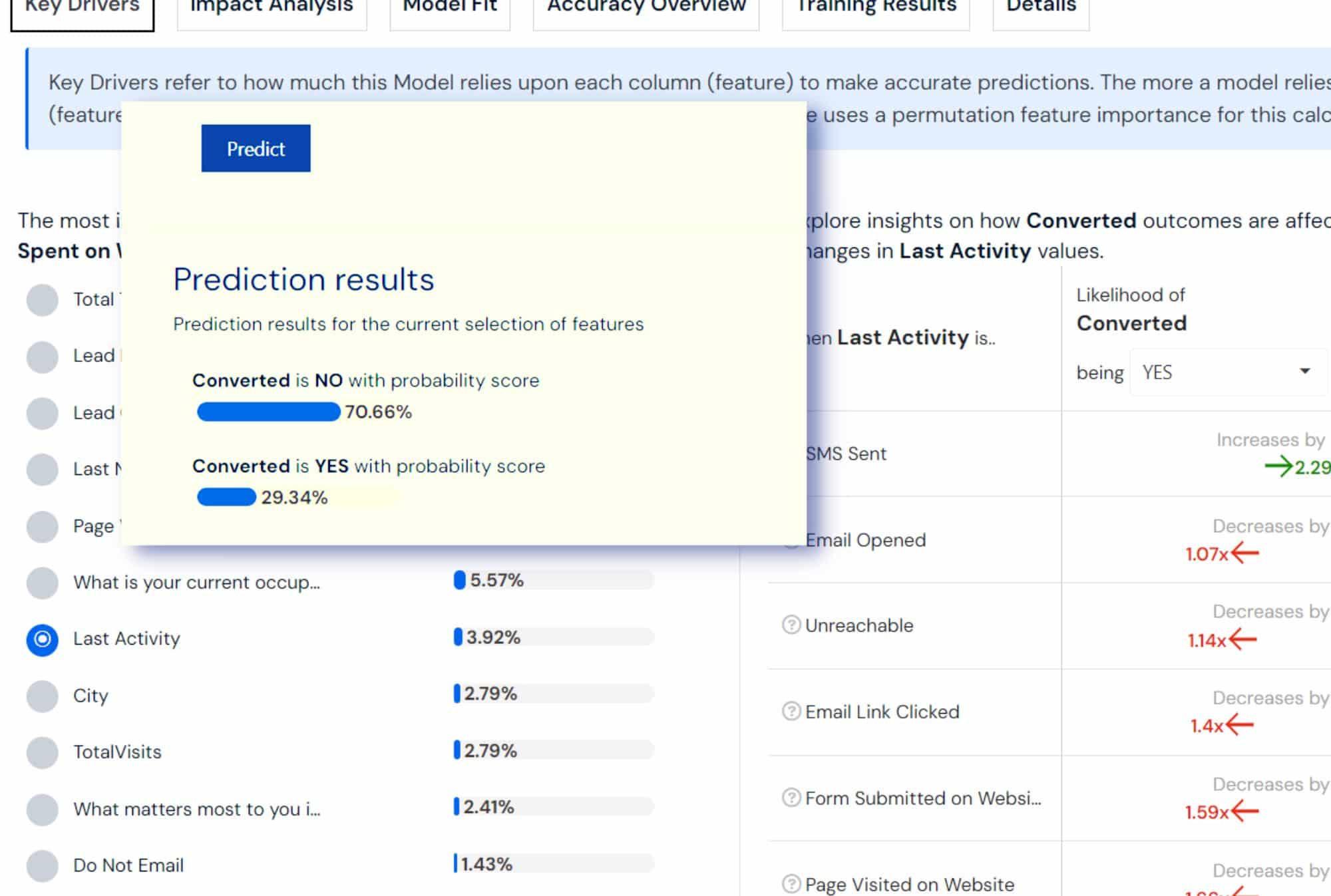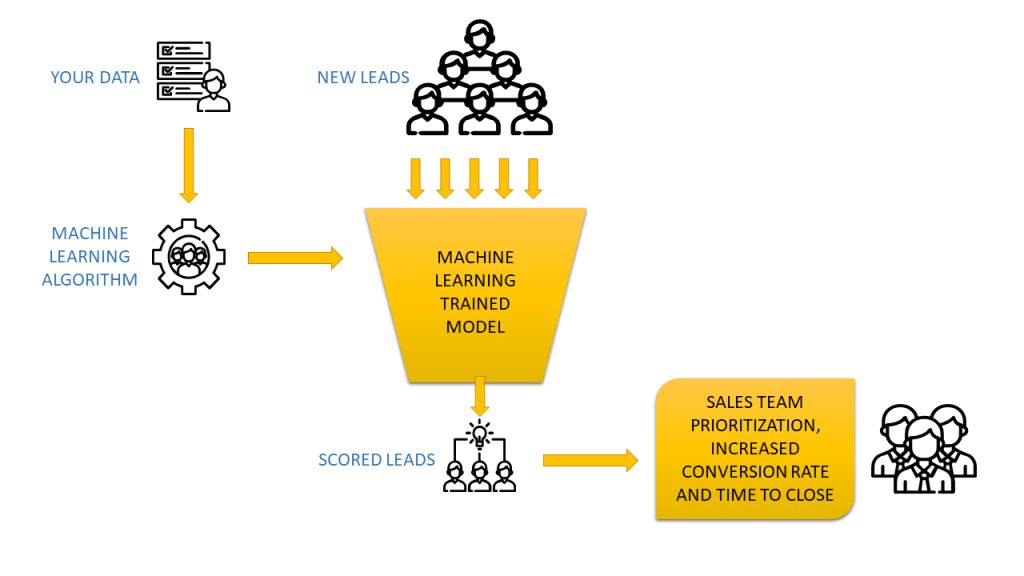Lead Scoring And Propensity Models
Lead scoring and propensity models can help you improve the accuracy and efficiency of your lead scoring process. No-code machine learning (ML) enables you to quickly identify your best leads from customer data sets. Machine learning propensity modeling does this with greater scalability and accuracy. By understanding how changing consumer preferences affect sales performance, you can develop targeted campaigns designed specifically around those preferences. This leads to increased Return On Investment (ROI) and improved conversion rates. Lead scoring and propensity modelling are essential tools for your business.
What is lead scoring?
Lead scoring is the process of assessing and assigning values to potential customers based on their likelihood of converting into paying customers. Lead scoring helps you prioritize prospects by determining which leads are more likely to make a purchase. Lead scoring is driven by data collected from customer interactions and activities. This customer data can include advertising, website visits, purchases made, customer experiences, and more. Machine learning uses algorithms to identify each lead’s probability of becoming a profitable customer.
What is a propensity model?
A propensity model is an analytic tool. Propensity modeling is used for analyzing an individual or groups’ current behavior to determine how they may act differently if certain conditions were different. Propensity modelling can predict how likely a customer is to upgrade their subscription plan or purchase a new product when presented with different options. This type of analysis enables you to better understand consumer preferences and behaviors. You can then market more effectively. This leads to higher conversion rates, thanks to predictive analytics tools you use.
For optimum target audience engagement, you need to use lead scoring, and propensity modeling. A customer propensity model gives you greater accuracy in predicting what actions your customers may take on your platform compared to regular one-off users. Combined, these two processes give you great insight into various aspects of your business. Your customer propensity model also helps you build propensity scores that highlight your target audience’s likelihood of conversion.

How does traditional lead scoring work?
Traditional lead scoring ranks leads based on their likelihood to convert into paying customers. This ranking helps you prioritize leads and guide sales efforts. The traditional approach often relies on manual scoring. Manual lead scoring can be time-consuming and, in some cases, inaccurate. Traditional lead scoring determines the quality of a lead for your business. This is based on specific lead scoring criteria. A score is manually assigned to the lead. This score is then used to determine whether or not that lead is qualified to make a purchase.
No-code machine learning and predictive power
The combination of artificial intelligence (AI), automation technologies, and Machine Learning makes no code ML methodology well-equipped to understand deep correlations between various factors which are usually neglected by basic rules driven traditional approaches used in practice today. Additionally, no code systems require substantially lower capital investments.

They ensure a higher return on investments over the entire product lifecycle compared with earlier solutions like hand-coded statistical models. The reason? Steep costs associated with upgradability considerations without any assurance for enhanced accuracy levels. You don’t need a team of data scientists to enhance your marketing campaigns.
No-code machine learning and business growth
Using a no-code machine learning approach for lead scoring and propensity models can significantly impact your business’s growth. By utilizing an AI-powered model, you can gain insights into customer behavior that traditional methods may not reveal. You’ll be able to identify which leads are likely to convert more quickly than others, as well as understand which types of campaigns or offers generate the most conversions. This information allows you to focus on those prospects with the highest likelihood of becoming paying customers – saving time and money in the process.
No-code ML also helps businesses personalize their marketing efforts by pinpointing potential buyers who fit specific criteria or match search terms used during research phases. That way, companies don’t waste valuable budgets targeting people who aren’t interested in what they’re selling. Instead, they only target those most likely to respond positively based on past performance data points such as website visits, page views, and previous purchases from similar customer profiles. This personalized approach increases response rates while significantly reducing costs associated with ineffective advertising campaigns due to better targeting accuracy across all channels, including email, direct mailings, and social media ads.
Additionally, leveraging no-code ML technology enables businesses to reduce manual effort by automating tasks like segmentation analysis. Marketers can save time spent on tedious tasks manually sifting through large data sets for relevant results. They can let a machine do what it does best – gleaning patterns from massive digital footprints left behind online. Marketers could spend less time analyzing converting trends but instead put their creative thought into crafting engaging content tailored specifically towards prospective consumers looking for products/services your brand offers!

How to implement no-code machine learning for your business
Implementing a successful no-code machine learning model in your business can be challenging. The key to success lies in understanding the basics of how no-code ML works and applying them correctly. To get started, you need to understand what data needs to be collected and how it will be used for training models. Additionally, finding the right tool that can help with building effective models is also important.
Graphite Note is an excellent choice for businesses looking to implement a no-code machine learning model. It provides easy access to powerful features such as automated feature engineering, hyperparameter tuning or visualization tools, without needing deep coding knowledge or expertise.
Once you have chosen Graphite Note as your preferred tool for implementing a successful No Code Machine Learning Model in your business, there are several steps you should consider:
- Creating datasets by defining variables and collecting relevant data points, which will feed into the algorithms developed on the platform — this will allow you to define specific goal-oriented metrics so that results can be more easily determined.
- Designing experiments and testing hypotheses related to different sets of variables within each dataset, utilizing visualizers within Graphite Note, which make complex analytical tasks easier to understand visually.
No-code machine learning and automation
The use of no-code machine learning (ML) for lead scoring and propensity models is becoming increasingly popular among businesses. No-code ML provides a level of automation, scalability, accuracy, and efficiency that traditional methods cannot match. This approach not only allows companies to identify the best leads from their customer data sets quickly but also helps them save time by eliminating manual processes involved with managing large volumes of leads.

No-code ML allows businesses to make better decisions faster without having to rely on code experts or expensive software packages for implementation. This means that companies can focus more resources on analyzing and implementing strategies based on insights gleaned from the analysis instead of worrying about coding issues or other technical problems associated with traditional methods.
Additionally, no-code ML systems are highly scalable, making them an ideal option for organizations looking to grow rapidly while keeping costs down.
Another benefit of using a no-code ML system is its ability to track changes in consumer behavior over time and provide detailed analytics reports that help marketers understand what type of content works best for each segmentation group within their customers’ database.
By understanding how changing consumer preferences affect sales performance, companies can develop targeted campaigns specifically around those preferences and increase ROI through improved conversion rates.
For these reasons and many others, every company should consider investing in a good quality no-code Machine Learning solution if they want to remain competitive in today’s market landscape.
Conclusion
No-code machine learning solutions are the future of lead scoring and propensity models. Graphite Note is a no-code ML platform that stands out from other solutions on the market due to its ease of use, scalability, and accuracy when it comes to providing insights into customer trends and behavior.
With Graphite Note, businesses can quickly identify high-quality leads while also saving time by eliminating manual processes involved with managing large datasets. Investing in this type of solution will help companies make better decisions faster, which in turn, helps them stay competitive in today’s market landscape. Therefore, if you’re looking for an effective way to increase ROI through improved conversion rates, then Graphite Note is definitely worth considering!




